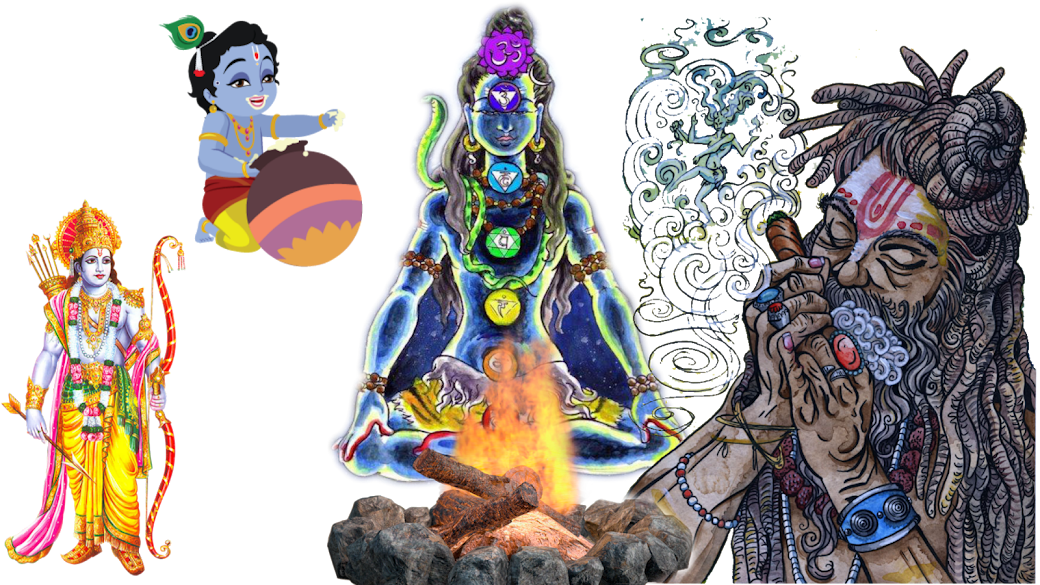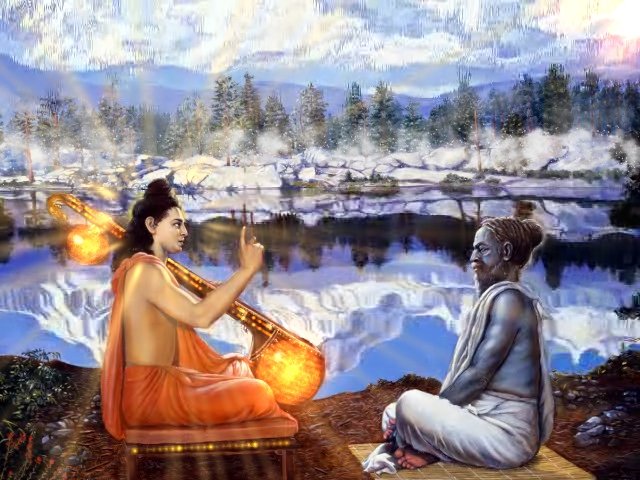Hindu Deities
List of Hindu Deities
A brief list of Hindu Gods And Goddesses
24 Incarnations of Lord Vishnu
We all are aware of only 10 popular incarnations of Lord Vishnu but as per scriptures and puranas, Lord Vishnu incarnated 24 times in 24 different avatars which includes the popular 10 incarnations too. Here's have a glance at it:
1. Adi-Purush Avatar:

This incarnation took place with a desire to commence creation. This incarnation was all powerful and full of sixteen kalaas. In this incarnation, Lord Brahma emerged from the navel of Lord Vishnu in the state of deep meditation.
2. Sanat Kumar (Brahma Manas Putra):

This incarnation was in the form of Manas Putra means born by wish. Lord Brahma had four sons and they were known as manasputra who throughout their life maintained celibacy and engaged in tremendous penance. This incarnation was the inspiration source for Brahmins.
3. Lord Varaha Avatar:
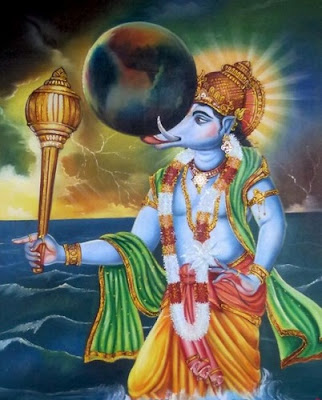
Lord Vishnu took this incarnation as a Boar and rescued this earth which had submerged in the ocean and brought it out from the ocean. The whole creation started only after that.
4. Sage Narada Avatar:

Lord Vishnu in his incarnation as Sage Narada showed the devotion is best means of getting free from bondages of Karma.
5. Sage Nara-Narayana Avatar:

Lord Vishnu in this incarnation of Sage Nara-Narayana took birth from the womb of a woman named Kala. It was the twin incarnation of Lord Vishnu on the earth working for the preservation of righteousness. The human soul Nara is the eternal companion of the Divine Narayana. Nara-Narayana performed a tremendous penance by going to Badri and Kedar and showed the importance of Penance (Labour) to the world that nothing can be achieved without it.
6. Sage Kapila Avatar:

Main Purpose of Lord Vishnu's incarnation as sage Kapila was to compile all the divine knowledge that had been destroyed and to teach this world Sankhya Shastra (rationalism) which helped the Brahmins, who had forgotten their duties to rectify their mistakes. His mother Devahuti was his first disciple.
7. Lord Dattatraya Avatar:

Lord Vishnu's in his seventh incarnation as Dattatraya born to Mata Ansuya and father Sage Atri. He was the one who had given Spiritual Knowledge to King Alarka and Prahlada. He had twenty four teachers. He believed that in the world, a man can learn from each and every thing, so he accepted twenty-four objects like water, bird, air, an unmarried girl, and even a prostitute etc.
8. Lord Yagya Deva Avatar:

Lord Vishnu in eighth
incarnation as Yagya was born to Prajapati and Akuti. Yagya' is a ritual of
sacrifice and is performed to please the gods. It involves pouring oblations
into the divine fire. In this avatar, Lord Vishnu’s main thrust of teaching was
based on the values of helpfulness and protecting each other during the time of
crisis.
9. Rishabh Avatar:
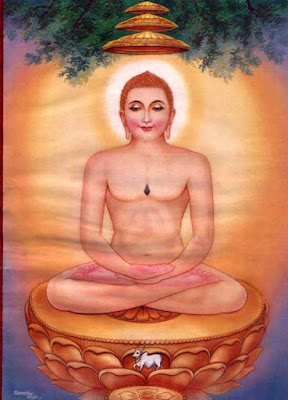
Lord Vishnu
in his ninth incarnation as Rishabh Dev
was born to king Nabhi and Marudevi. His mother Marudevi was the daughter of
Indra. He attained that state of Paramhansa which is an uphill task. He was
given the title of 'Jin' which means 'a knower'. His followers are known as
Jains. He
was the first of the 24 Tirthankaras.
10. Prithu Avatar:

Lord Vishnu as
'Prithu' took this incarnation as per the wishes of the sages. The earth had
concealed all the vegetation's within her and as a result the whole land had
become barren. To protect the humanity, Lord Vishnu took incarnation as Prithu
by milking the cow (earth). This is considered as supreme incarnation, because after
that the earth has remained full of vegetations.
11. Lord Matsya Avatar:
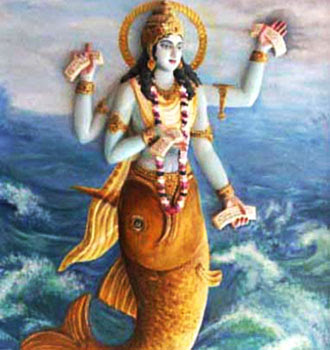
All the
oceans had unified into a single ocean in the 'Manvantara' of 'Chakshusha'.
Lord Vishnu in his 11th incarnation as a Matsya (Fish) rescued the earth from
'Maya' the demon. He gave discourses to Satyavrat along with the seven sages,
while they were sitting on the boat. He also showed them his illusionary powers.
12. Lord Kurma Avatar:
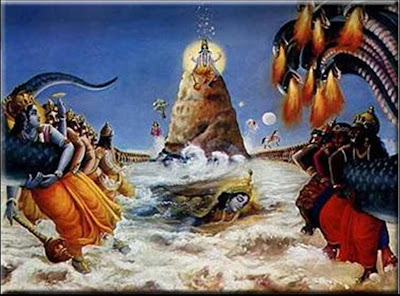
In twelfth incarnation as a tortoise, Lord Vishnu held the mountain 'Mandarachala' on his back, during the time when the deities and the demons where churning the ocean. He stopped the mountain from going to the nether world.
13. Lord Dhanvanatari Avatar:

Lord Vishnu took his thirteenth incarnation as Dhanvantari. He manifested from the ocean holding a vessel filled with ambrosia. He was the profounder of medicinal science.
14. Mohini Avatar:

Lord Vishnu in his fourteenth incarnation as Mohini enchanted the demons by his beautiful appearance of a woman, and took away the pot filled up with ambrosia from them and gave it to the deities. The deities were thus protected from the demon.
15. Lord Narsimha Avatar:

Lord Vishnu took his fifteenth incarnation as Narisimha, having upper body in the form of lion and the lower resembling of a man. In this incarnation he protected Prahlada from his father Hiranyakashipu, the demon. He killed Hiranyakashipu by tearing his body apart by his nails. Lord Vishnu had to attain this form because Lord Brahma had blessed Hiranyakashipu, that a Human being could not kill him.
16. Lord Hayagreeva Avatar:

The main purpose of this incarnation of Lord Vishnu was to restore and protect the Vedas, which were stolen by Madhu and Kaitaba. In this incarnation of Hayagreeva, his face resembled that of a horse and the rest of his body resembled that of Sri Narayan with all of his four hands. He killed the demon and protected the Vedas.
17. Lord Vamana Avatar:

Lord Vishnu took his seventeenth incarnation as Vamana (a Dwarf), when Bali the king of demons had captured the entire three worlds. To help the deities regain control over the heaven, Lord Vishnu disguised as a dwarf went to Bali when he was busy performing a 'Yagya' and demanded earth measured by his three steps. When 'Bali' agreed, he transformed his form from a small dwarf to a giant. Consequently he covered all three worlds with his two steps. Ultimately he regained heaven for the deities.
18. Lord Parshurama Avatar:

When the Kshatriya kings became ruthless and started exploiting their subjects. Lord Vishnu took his eighteenth incarnation as Parshurama' and annihilated the Kshatriyas kings for seventeen times and consequently donated the earth to the Brahmins.
19. Sage Vyasa Avatar:

Lord Vishnu took his nineteenth incarnation as Sage Vyasa by taking birth from the womb of 'Satyavati'. His father was sage Parashar. He made the division of Veda, and made extension of its branches. He also wrote eighteen Mahapuranas and the Mahabharata.
20. Lord Rama Avatar:

Lord Rama is considered to be the twentieth incarnation of Lord Vishnu in the era of Satyug. In this incarnation he constructed a bridge over the ocean with the help of the Vanars and after crossing over to Lanka killed many demons like Ravana, Kumbhakarna. He taught the value of morality.
21. Lord Balarama Avatar:

Balrama is considered to be the twenty-first incarnation of Lord Vishnu. He was also the elder brother of Lord Vishnu’s Krishna Avatar. In this incarnation, he killed Pralambasura, the demon and many more demons.
22. Lord Krishna Avatar:

Lord Krishna born in Mathura was the twenty-second incarnation of Lord Vishnu. He fought against the exploitation right from his childhood and killed many demons like Kalayavan, Kansa, Jarasandh etc. He gave the divine knowledge in the form of Bhagvad Gita to Arjun during the battle of Kurukshetra.
23. Lord Buddha Avatar:

The twenty-third incarnation of Lord Vishnu was as Lord Buddha. In the Kaliyuga, the demons were completely subjugated by the deities. Shukracharya the teacher of the demons instigated the demons to perform Yagya so that they could regain power and authority. Fearing this, deities prayed to Lord Vishnu for help. Lord Vishnu took incarnation as Buddha and dissuaded the demons from performing Yagya as it involves violence. The demons stopped performing yagyas.
24. Lord Kalki Avatar:

At the end of Kaliyuga, when the sins would be all pervading and the kings would themselves becomes thieves then Lord Vishnu would take his twenty-fourth incarnation as Kalki by taking birth in the village of 'Shambhal' in a Brahmin family of Vishnuyash. By killing and destroying the sinners, he would re-establish the superiority of Virtuosity and religiousness.
